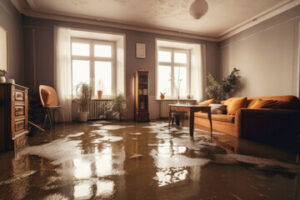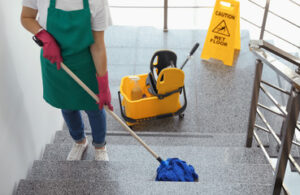Water damage restoration professionals use specialized drying techniques to save belongings that would otherwise be irreparably damaged. They also employ strategies to prevent mold growth and sanitize contaminated areas.

The first step in a restoration project is identifying the amount and type of water damage. The damage is typically divided into three categories based on its origin and quality: class one water, category two water, and category three water. Contact Water Damage Repair Los Angeles for professional help.
Before hiring a company to work on your home’s water damage, check out their credentials. They should have an IICRC certification and have experience in repairing water damage. They should also have the right equipment and have a history of providing excellent service. The company should have an emergency line available 24/7 and provide a free estimate before beginning the restoration process.
The first step in the restoration process is extracting all of the standing water with a commercial-grade truck-mounted extractor. Then, the professionals should dry the structure with air movers and dehumidifiers. The moisture level must be monitored and reduced to avoid mold problems.
Once the effected materials are dried, cleaning and sanitizing should take place. This will remove contaminants from the affected materials and reduce the potential health risks associated with category 3 water damage, which may include sewage back-up or black mold growth. If necessary, drywall will need to be removed and sanitized, carpeting and padding must be cleaned, and disinfectants applied.
If you have a severe case of water damage, it is important to call a professional immediately. Not only will a professional have the proper equipment to handle the job, but they will also know how to do it quickly to prevent further damage to your property and health hazards for you and your family.
You can try to clean up the damage yourself if it is not too extensive, but you will probably need to hire someone to help you with the cleanup and drying. This will be much faster and more effective than trying to do it yourself.
A professional will have the necessary experience and skills to handle all types of water damage. They will have the knowledge to identify the source of the problem, repair it and restore your home or business to its pre-loss condition. They will use various measurement tools to determine what materials are wet, such as a thermo-hygrometer and thermal imaging cameras. They will also use industry-specific equipment, such as LGR dehumidifiers and air movers, to monitor and adjust the humidity, temperature and airflow until the area is completely dry.
Experience
Water damage can be one of the most difficult home issues to deal with. It can also be dangerous for the structure of your home and a health risk for your family. Standing water breeds mold and other pathogens that can lead to respiratory problems and other serious illnesses. This is why it is important to get water damaged areas cleaned and repaired as quickly as possible.
While some small leaks can be handled by the homeowner, large amounts of water or severe water damage needs to be addressed immediately by a professional. A professional will be able to quickly and effectively evaluate the situation, make recommendations for repairs and begin the drying process.
They will have the knowledge and expertise to handle a variety of issues related to the water damage including structural repair, cleaning, disinfecting and deodorization of floors, walls and furnishings. They can also recommend appropriate products such as paints that are designed to be mold-resistant and drywall made from materials that resist moisture.
Severe water damage needs to be addressed as soon as possible, especially if it affects the wood framing of your home. Water can rot and create mold and mildew problems if not dealt with promptly. If your home has been flooded, it is crucial that the source of the flooding be shut off as soon as possible to prevent further damage.
Once the source of the water is shut off, your professional can start the process of assessing and repairing the area. They will begin by removing any furniture or personal items from the affected area. They will then use fans and dehumidifiers to remove the excess moisture from the area. Once the area is dry, they can replace the carpet and rugs and thoroughly clean any wood surfaces that have been affected by the water.
In some cases, the area may be so wet that it will need to be completely reconstructed. If this is the case, your professional will be able to work with your insurance provider to ensure that all covered costs are met.
Equipment
Water damage repair experts can help homeowners restore their property to its pre-damage state. This involves a five-step process: inspection and assessment, water extraction, drying and dehumidification, cleaning and sanitization, and restoration and repairs. To perform their job, they use professional-grade equipment and supplies like water pumps, air movers, and dehumidifiers. When choosing a company to hire for water damage restoration, look for IICRC-certified professionals who are trained in the proper techniques for restoring properties.
The first step in the water damage restoration process is identifying the source of the problem and classifying it as either structural or non-structural. During this phase, specialists will use tools such as hygrometers and moisture detectors to find out how much water has entered the structure and where it’s located. They will also determine the extent of the damage and how it was caused, such as from a sewage backup or flooding from storms.
Once they have identified the source of the problem, water damage restoration specialists will remove any standing water from the affected area using tools such as submersible pumps and wet vacuums. Depending on the severity of the problem, multiple rounds of water removal may be necessary. This is known as “extracting” and is done in order to decrease drying times and avoid secondary damages.
Drying is the next stage in the restoration process. Once the standing water has been removed, professionals will use air movers and dehumidifiers to dry out the remaining areas and materials. This includes the underlying structures of a home or business, as well as furniture and personal belongings. Dehumidification is important because it helps reduce humidity levels and prevents the growth of mold and bacteria, which thrive in high-moisture environments.
To ensure the effectiveness of drying, a hygrometer is used to measure the moisture content of the material. This is done in order to identify any hidden moisture pockets that are not visible to the naked eye. Other essential equipment for a water damage restoration contractor include air scrubbers, which remove odors and harmful pollutants from the air, and air temperature gauges that help to maintain optimal conditions for drying.
Insurance
Water damage can be one of the most devastating problems that homeowners face. Not only does it cause extensive damage to homes and belongings, but it can also lead to financial disasters if not addressed quickly enough. Understanding the nuances of your insurance coverage is critical to avoid these problems and protect your finances.
The first step in claiming compensation for water damage is to notify your insurance company as soon as possible. They will assign an adjuster to evaluate the damage and take photos of the affected areas. He or she will then ask questions about how the damage occurred and when it started. This is to determine if the damage was sudden and accidental, or if it could have been prevented.
Typically, standard homeowner’s insurance covers several types of water damage. This includes damage from burst pipes, leaky roofs, and water that comes through the foundation of your home. However, it doesn’t cover damage from floods or sewage backups. You may want to consider obtaining additional coverage for these situations.
Many insurance companies have specific guidelines for what they will and won’t cover. For example, they typically won’t cover gradual water damage that happens over time, such as a slow leak from a faulty sink or a rusty pipe. Additionally, they won’t cover damages caused by negligence, such as neglecting to fix a broken roof or leaking shower.
When you file a claim for water damage, your insurance adjuster will visit your property to evaluate the damage and take measurements. He or she will then ask you about any damaged items and their value. This will help the insurance company assess what the cost of repairing and replacing these items will be. It is important to be honest with the insurance adjuster at all times to avoid any disputes.
Once your insurance company has awarded you a settlement for the water damage, be sure to use the funds appropriately. It’s not uncommon for homeowners to use their settlement money to upgrade their home, such as replacing linoleum tile with Brazilian hardwood.
